
Nights into Dreams is a 1996 action game developed by Sonic Team and published by Sega for the Sega Saturn. The story follows the teenagers Elliot Edwards and Claris Sinclair, who enter Nightopia, a dream world where all dreams take place. With the help of Nights, an exiled "Nightmaren", they begin a journey to stop the evil ruler Wizeman from destroying Nightopia and consequently the real world. Players control Nights flying through Elliot and Claris's dreams to gather enough energy to defeat Wizeman and save Nightopia. The game is presented in 3D and imposes time limits on every level, in which the player must accumulate points to proceed.
Sonic Team is a video game developer owned by the Japanese video game company Sega as part of its Sega CS Research and Development No. 2 division. Sonic Team is best known for its namesake long-running Sonic the Hedgehog series and games such as Nights into Dreams and Phantasy Star Online.

The Dreamcast is the final home video game console manufactured by Sega. It was released on November 27, 1998, in Japan; September 9, 1999, in North America; and October 14, 1999, in Europe. It was the first sixth-generation video game console, preceding Sony's PlayStation 2, Nintendo's GameCube, and Microsoft's Xbox. The Dreamcast's 2001 discontinuation ended Sega's 18 years in the console market.

Sonic Adventure is a 1998 platform game developed by Sonic Team and published by Sega for the Dreamcast. It was the first main Sonic the Hedgehog game to feature 3D gameplay. It follows Sonic the Hedgehog, Miles "Tails" Prower, Knuckles the Echidna, Amy Rose, Big the Cat, and E-102 Gamma in their quests to collect the Chaos Emeralds and stop Doctor Robotnik from unleashing Chaos, an ancient evil. Controlling one of the six characters—each with their own abilities—players complete levels to progress the story. Sonic Adventure retains many elements from prior Sonic games, such as power-ups and the ring-based health system. Players can play minigames such as racing and interact with Chao, a virtual pet.
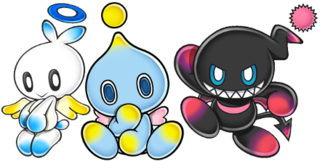
Chao are fictional life-forms in the Sonic the Hedgehog video game series published by Sega. They are small, childlike creatures that go through a complex life cycle and exist in several visual forms depending on how they are raised. Developer Sonic Team incorporated Chao into the games to encourage players to explore levels and support the good–evil dichotomy of Sonic Adventure 2.

Phantasy Star Online is an online role-playing game (RPG) developed by Sonic Team and published by Sega in 2000 for the Dreamcast. It was the first successful online RPG for game consoles; players adventure with up to three others over the internet to complete quests, collect items and fight enemies in real-time action RPG combat. The story is unrelated to previous games in the Phantasy Star series.

ChuChu Rocket! is an action puzzle game developed by Sonic Team and published by Sega. Released for the Dreamcast in 1999, it was the first game for the system to support online console gaming. Players must place arrows on a board to lead mice into escape rockets while avoiding cats. The game features single-player modes in which a player must save all the mice on a board, and a multiplayer mode in which players battle to collect the most mice.

Sonic Adventure 2 is a 2001 platform game developed by Sonic Team USA and published by Sega for the Dreamcast. It features two good-vs-evil stories: Sonic the Hedgehog, Miles "Tails" Prower, and Knuckles the Echidna attempt to save the world, while Shadow the Hedgehog, Doctor Eggman, and Rouge the Bat attempt to conquer it. The stories are divided into three gameplay styles: fast-paced platforming for Sonic and Shadow, multidirectional shooting for Tails and Eggman, and action-adventure exploration for Knuckles and Rouge. Like previous Sonic the Hedgehog games, the player completes levels while collecting rings and defeating enemies. Outside the main gameplay, they can interact with Chao, a virtual pet, and compete in multiplayer battles.

Sonic Advance, known as SonicN on the N-Gage, is a 2001 platform game developed by Dimps and published by Sega for the Game Boy Advance. It was the first Sonic the Hedgehog game released on a Nintendo console with Sonic Adventure 2: Battle on the GameCube, and was produced in commemoration of the series' tenth anniversary. The story follows Sonic, Tails, Knuckles, and Amy as they journey to stop Doctor Eggman from taking over the world. Controlling a character, players are tasked with completing each level, defeating Eggman and his robot army, and collecting the seven Chaos Emeralds.
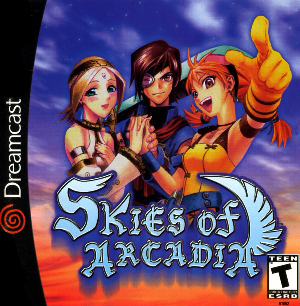
Skies of Arcadia is a 2000 Dreamcast role-playing video game developed by Overworks and published by Sega. Players control Vyse, a young air pirate, and his friends as they attempt to stop the Valuan Empire from reviving ancient weapons with the potential to destroy the world.

18 Wheeler: American Pro Trucker, known in Japan as 18 Wheeler, is an arcade game developed by Sega AM2 and distributed by Sega. The game was released in arcades in 2000 and ported to the Dreamcast in 2001. It was released for the PlayStation 2 in 2001 and GameCube in 2002 by Acclaim Entertainment. Sega followed up on the success of 18 Wheeler with a sequel, The King of Route 66, which was released in the arcades in 2002 and ported to the PlayStation 2. This was one of the final arcade games to be ported to the Dreamcast after its discontinuation, before Sega became a third-party developer.
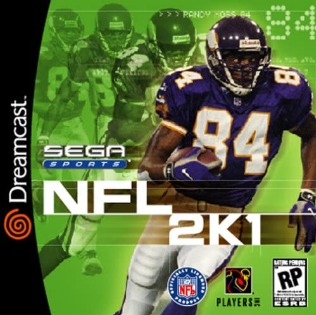
NFL 2K1 is an American football simulation video game that uses remediation, and was published by Sega and developed by Visual Concepts. It was released on Dreamcast on September 7, 2000, with multiple in-game commercialization like its Dreamcast ads in stadiums. Randy Moss of the Minnesota Vikings is featured as the cover athlete. Upon its release, it outsold the PlayStation 2 version of Madden NFL 2001 by 13,000 units in its first week, and 49,000 units its second week.

Sega Rally 2 is an arcade racing game developed by Sega for the Model 3 arcade hardware. It is the sequel to 1994's Sega Rally Championship. The game was first released in arcades in February 1998, and was later ported to the Sega Dreamcast, becoming one of the console's earliest titles when it was released in Japan on January 28, 1999. The Sega Dreamcast version was released in Europe as a launch title on October 14, 1999, and then in North America on November 27. A PC version was released in Japan and Europe that same year, with the North American release following suit in September 2000, where it was published by Mattel Interactive.

Red Dog: Superior Firepower, also known as simply Red Dog, is a shooter game released in 2000 for the Sega Dreamcast; it was developed by Argonaut Games.

Illbleed is a survival horror game developed by Crazy Games and released for the Dreamcast in 2001. It was published by Crazy Games in Japan and Amusement Interface Associate (AIA) in North America. The game follows Eriko Christy, a high school student who explores a horror-themed amusement park to find her missing friends. The player explores six haunted house attractions based on fictional horror films, detecting and neutralizing hidden traps and enemies which can harm or frighten Eriko and her friends.
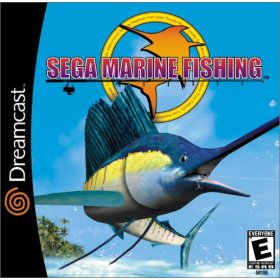
Sega Marine Fishing is a fishing video game published by Sega for arcade games, Dreamcast and Microsoft Windows in 1999-2002.

Ooga Booga is an online multiplayer video game for the Dreamcast, focusing on the combat of "Kahunas" using thrown shrunken heads, riding animals, staffs, or using spells. The game received positive reviews from video game critics.
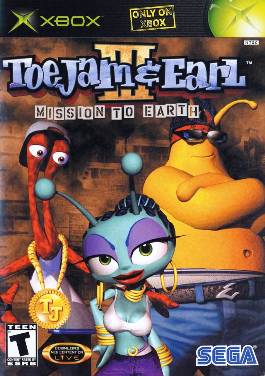
ToeJam & Earl III: Mission to Earth is an action video game released for the Xbox on October 22, 2002. Developed by ToeJam & Earl Productions and Visual Concepts, and published by Sega, it is the third installment in the ToeJam & Earl series. Players assume the role of one of three extraterrestrial protagonists: ToeJam and Earl, who starred in the series' first two games, and Latisha, a new character. While using power-ups to combat enemies, players seek to collect the twelve "Sacred Albums of Funk" and defeat the antagonistic "Anti-Funk."

World Series Baseball 2K1 is a sports video game developed by WOW Entertainment and published by Sega for the Dreamcast in 2000.
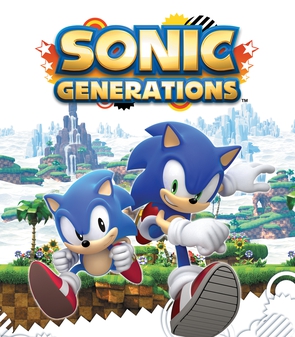
Sonic Generations is a 2011 platform game developed by Sonic Team and published by Sega for the PlayStation 3, Xbox 360, Windows, and Nintendo 3DS. Produced in commemoration of the 20th anniversary of the Sonic the Hedgehog series, the game follows Sonic and his sidekick Tails as they form an alliance with their modern selves. It features two gameplay styles: "Classic", which plays from a side-scrolling perspective like that of the original Sega Genesis Sonic games, and "Modern", 3D levels similar to those in Sonic Unleashed (2008) and Sonic Colors (2010).



















